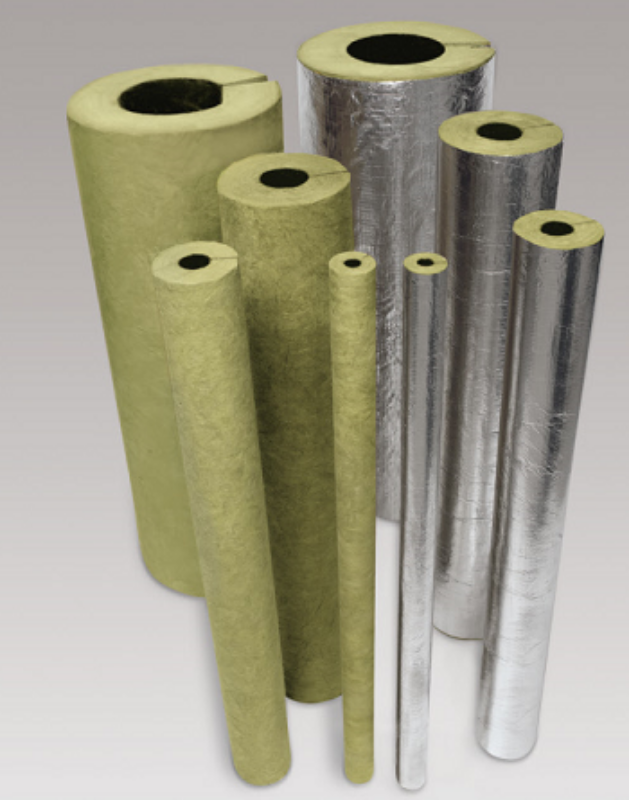
Choosing The Correct Pipe Insulation
Choosing The Correct Pipe Insulation
There is a wide range of Pipe Insulation Types available. This guide will explain the most suitable types of insulation for the most common applications.
Before you choose the type of Insulation, you'll need to know two crucial factors - your pipe bore (the diameter) and the thickness of the insulation you require ("the wall thickness")
1. Pipe Bore (Diameter)
The pipe diameter (or bore) can be measured in imperial sizes (in inches) or metric sizes (in mm). For insulation purposes, both measurements refer to the outside diameter (O.D) of the pipe.
When measuring steel pipe, it is important to remember that the OD measurement will be higher than the actual internal bore size - this is because the steel pipe has a substantial thickness of several mm. For instance, a steel pipe with a 25 mm bore, will have an outside diameter (OD) of 34 mm. This method does not apply to copper pipe.
2. Insulation Thickness (Wall Thickness)
All of our pipe insulation products are available in different thicknesses (also referred to as wall thickness). As a rule of thumb - thicker insulation = less heat loss from pipes and greater protection from freezing temperatures.
For outdoor pipework, we recommend a minimum insulation thickness of 19mm.
Insulation Types:
Grey Foam Insulation - Armacell Tubolit
Our most economically priced Insulation. Tubolit is made from grey polyethylene foam, the insulation is ideal for use in domestic pipework and plumbing. It is available in all of the standard internal pipe sizes and is available in several wall thicknesses. The insulation is supplied in either one or two-meter lengths and comes semi-split for ease of installation. This insulation is not suitable for outdoor use.
Class O Nitrile Foam Rubber Insulation - Armaflex
Class O Insulation is a flexible, closed-cell, elastomeric, nitrile rubber insulation that offers reliable protection against condensation and effectively prevents energy loss. It is available in some formats including 2-meter unsplit tubes, long coils, sheets, and also as a pre-slit self-seal tube that reduces installation times by up to 30%. The insulation is very versatile and can be used in a wide range of applications including domestic, plumbing, and air conditioning. Class O insulation (Class O refers to the fire standard) can be used on hot pipes up to a temperature of 105 degrees Celsius. For temperatures above this (up to 150 degrees), an EPDM rubber insulation would be more suitable (see below).
*Class O insulation can be used outdoors but will require further protection from UV exposure, such as one of the Armafinish Paints. Without additional protection, the insulation will eventually crack and crumble.
EPDM Foam Rubber Insulation - Armaflex HT
EPDM rubber insulation is ideal for outdoor, high temperature, and solar pipework use. The insulation has an in-built UV protective layer, meaning it can be installed outside without any further treatment or coverings. This insulation is also suitable for high-temperature pipework (up to 150 degrees Celsius), making it ideal for use on solar heating systems. The insulation is available in 2-meter unsplit tube lengths, long coils, and flat sheets in a range of wall thicknesses. For outdoor use, we recommend a minimum insulation wall thickness of 19mm.
Mineral Fibre Insulation - Foil Coated - Rockwool
Rockwool Insulation is designed for use in heating, ventilation, and air conditioning applications; mineral fiber insulation can withstand temperatures of up to 700 degrees Celsius. The insulation is provided as mineral fiber insulation sections which have a factory applied foil covering with an integral adhesive overlap. This feature dramatically speeds up installation times. The insulation can be used either indoors or outdoors. *If used outdoors, however, an additional protective covering sheet known as Polyisobutylene (PIB) needs to be applied.
Phenolic Foam Insulation - Foil Covered - Kingspan Kooltherm
Phenolic foam insulation is the most energy-efficient insulation available for any given thickness. It is typically used in industrial applications in the heating, ventilation, air conditioning, and petrochemical and maritime sectors. The pipe insulation is supplied in foil-faced sections for a range of pipe diameters. In addition, the material is available in slab and sheet form and can be used as roofing and wall insulation. Phenolic foam insulation can be used at temperatures up to +120 degrees Celsius and as low as -50 degrees Celsius. As with mineral wool Insulation, phenolic insulation can be used outdoors * but will require additional covering with Polyisobutylene (PIB) sheeting.
Please note: All content contained in this blog post has an exclusively informative value. It has only the purpose of facilitating the understanding of the use of flameproof materials for insulation. InsulRef is in no case responsible for the accuracy of the information and/or for any misinterpretation. Please consult with qualified insulation professional for advice on your particular project’s needs.